Explore Our Latest Insights
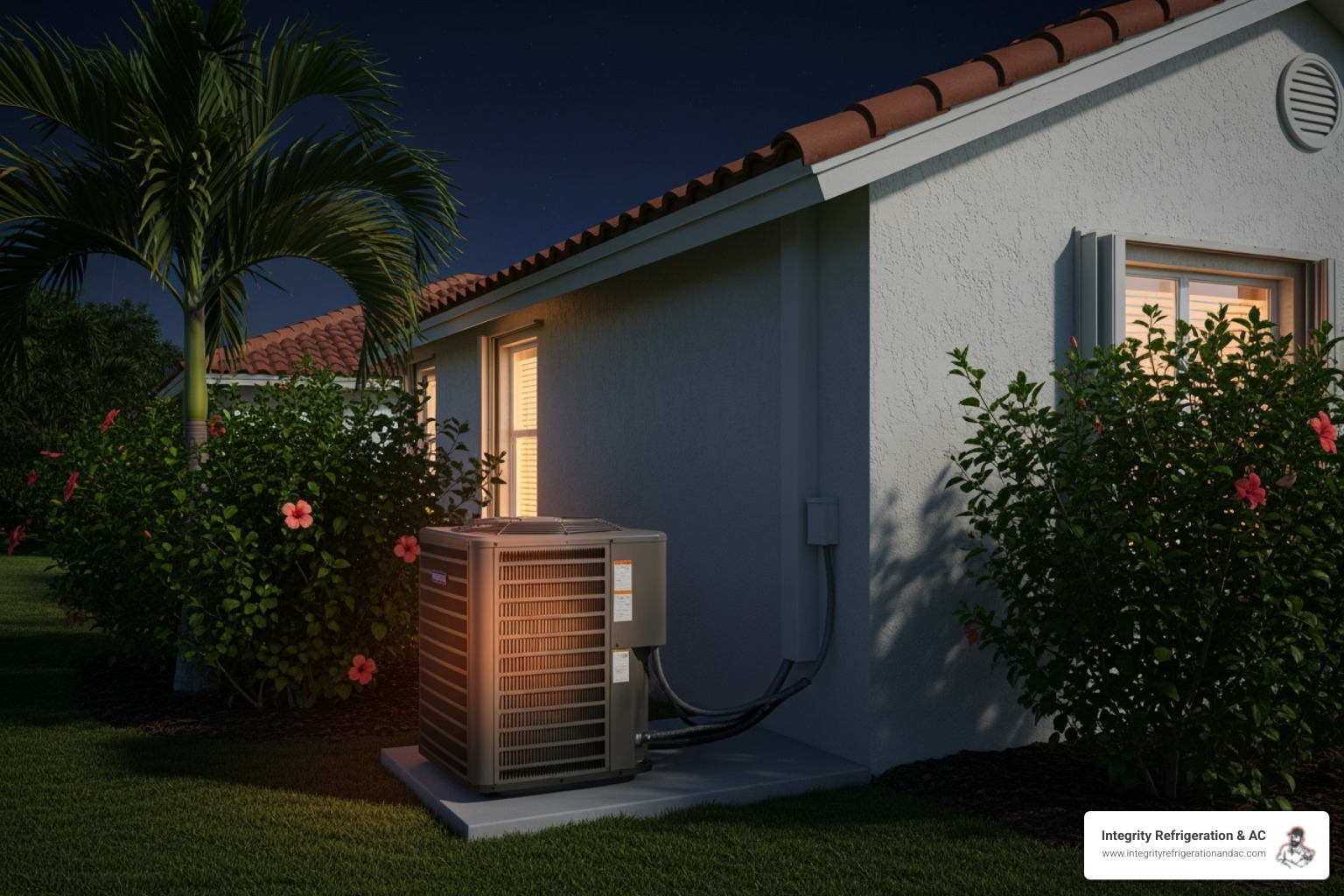
Don't Sweat It: Get 24-Hour HVAC Service in Lakeland, FL, Fast!
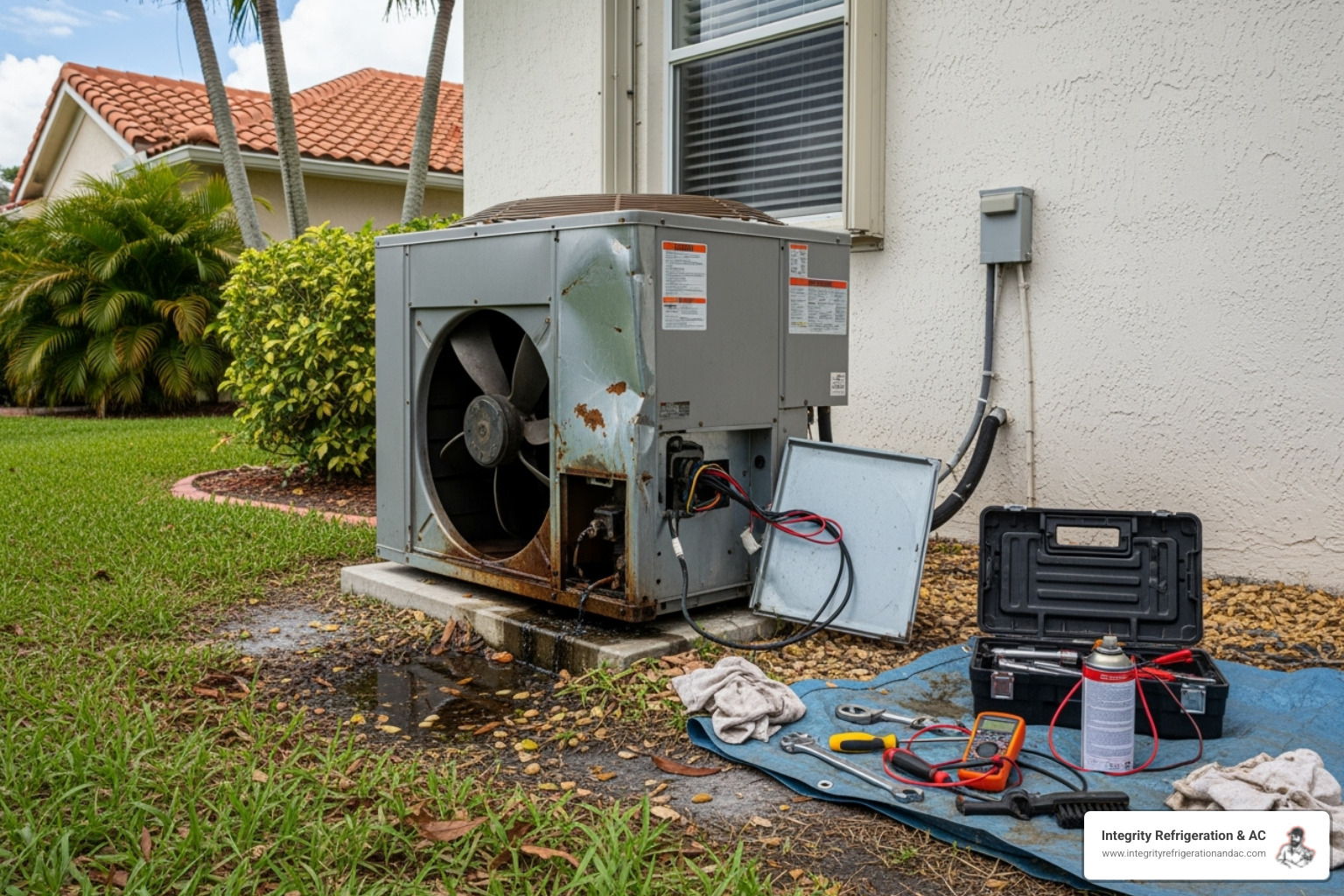
Don't Sweat It: Fast & Reliable Emergency Heat Pump Service in St. Cloud
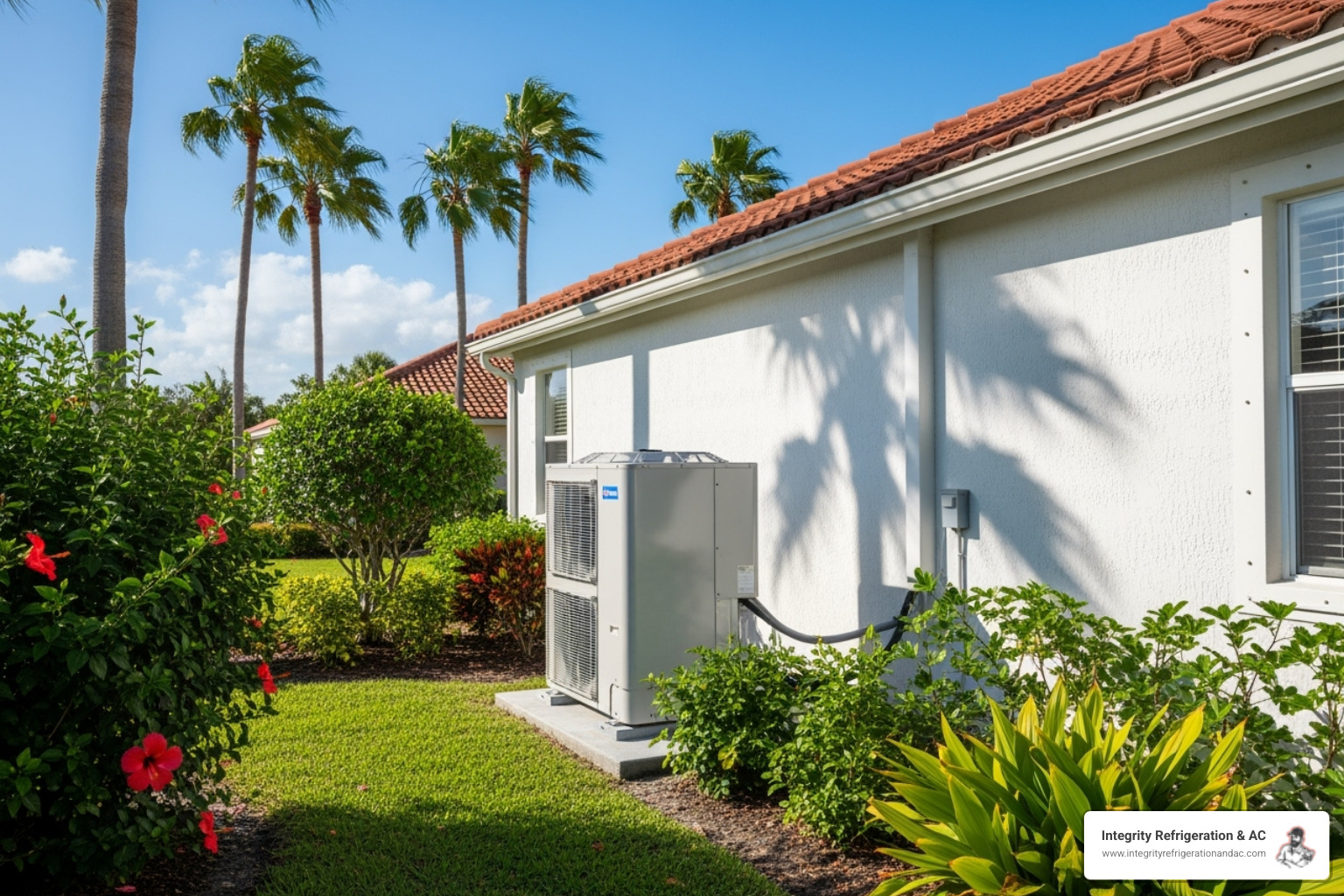


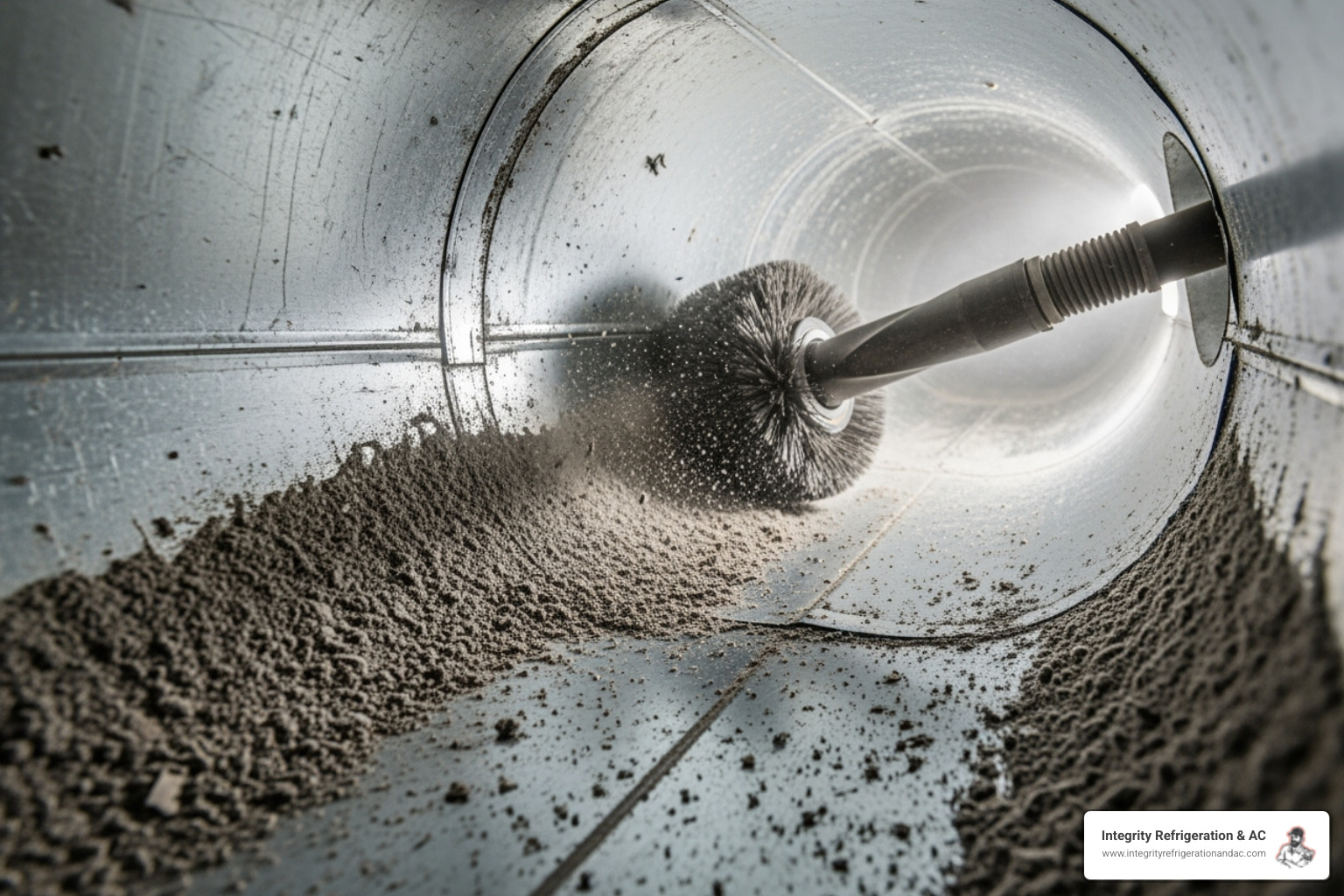
HVAC duct cleaning is a controversial topic in home maintenance. You've likely seen ads for $99 specials or heard neighbors swear it cured their allergies. So, what's the real story?
Quick Answer: Is Duct Cleaning Worth It?
The confusion stems from conflicting information. The EPA states that "duct cleaning has never been shown to actually prevent health problems," while the National Air Duct Cleaners Association (NADCA) promotes its benefits. This guide will help you cut through the marketing hype.
Your ducts can collect dust, pet dander, and pollen, which recirculate through your home five to seven times daily. In some cases, cleaning these systems is a smart move. In others, it's an unnecessary expense. As the EPA notes, "Knowledge about air duct cleaning is in its early stages, so a blanket recommendation cannot be offered." This guide will help you make an informed decision for your home.
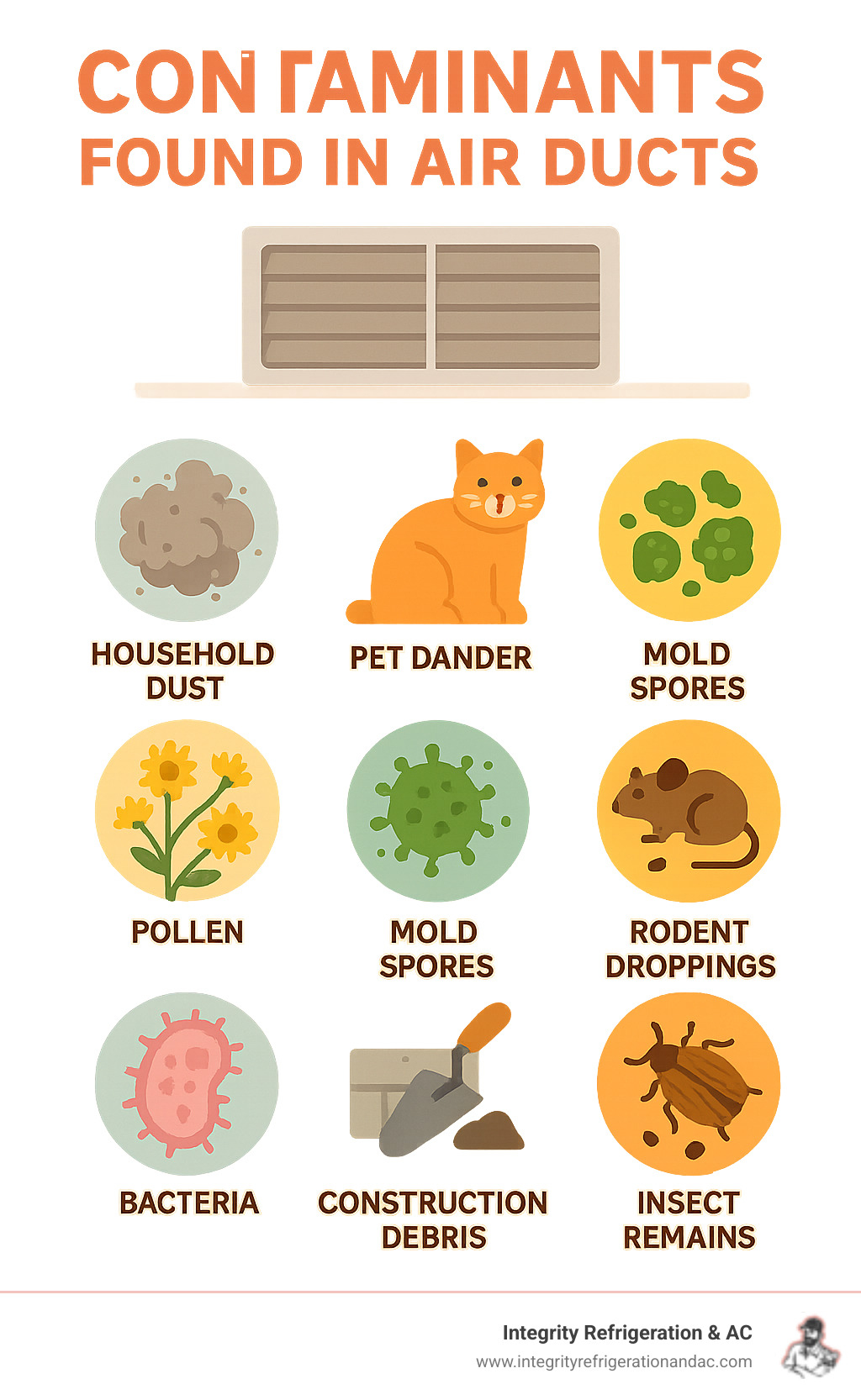
The key question isn't whether HVAC duct cleaning works, but whether your ducts need it. The EPA recommends cleaning only when there's a specific problem, not as routine maintenance.
Visible mold growth is a compelling reason. If you see fuzzy, discolored patches inside ducts or on HVAC components, it's time to call a professional. A pro can determine if it's truly mold, sometimes requiring lab analysis. If you have insulated ducts that are moldy, they must be replaced, as mold cannot be effectively cleaned from porous materials.
Pest infestations are another clear sign. Evidence of rodents or insects—droppings, nests, or remains—means a thorough cleaning is in order to remove contaminants from your air pathways.
If you see excessive dust and debris blowing from your vents, your ducts may be overloaded. While a light dusting is normal, significant buildup can strain your system.
Post-renovation cleanup is also crucial. Construction creates fine dust that settles in ductwork and circulates long after the project is finished. Our guide on Essential Air Duct Cleaning offers more detail on recognizing these situations.
Finally, consider cleaning for unexplained allergy symptoms that worsen when the HVAC system runs. While the EPA is cautious about direct health benefits, the National Air Duct Cleaners Association (NADCA) suggests cleaning can be worthwhile for pet owners, homes with smokers, or when moving into a new home.
Will HVAC duct cleaning make you healthier? It's complicated. Your home's air recycles through the HVAC system 5-7 times a day. For people with asthma or severe allergies, removing contaminants like dust, dander, and pollen can be part of a good indoor air quality strategy.
However, the EPA states that "duct cleaning has never been shown to actually prevent health problems." They note that much of the dirt in ducts adheres to surfaces and doesn't enter the living space, and that daily activities like cooking and cleaning often create more airborne particles.
The key distinction is that professional HVAC duct cleaning should service the entire system—air handler, coils, drain pan, and blower motor. Cleaning only the ducts is ineffective, as contaminants from other components will quickly re-contaminate them. For more on how ductwork impacts system health, see The Importance of Ductwork in Heating Installation.
While cleaning ducts alone has limited proven efficiency benefits, cleaning the entire HVAC system can make a difference to your wallet. When components like the blower motor, heat exchanger, and evaporator coil are covered in dust, they act as an insulator, forcing the system to work harder.
This restricted airflow means your system uses more energy to move air, leading to higher utility bills. Professional cleaning removes this buildup, allowing components to run more efficiently, reducing strain, and potentially extending their lifespan.
However, even clean ducts won't help if they're leaky. Properly sealed ductwork is crucial for energy efficiency. The EPA's Energy Star website has excellent resources on sealing duct leaks, which can be as important as cleaning for lowering energy bills.
If you've decided your ducts need attention, it's important to know what a professional HVAC duct cleaning entails. It's far more than just sticking a vacuum hose in your vents.
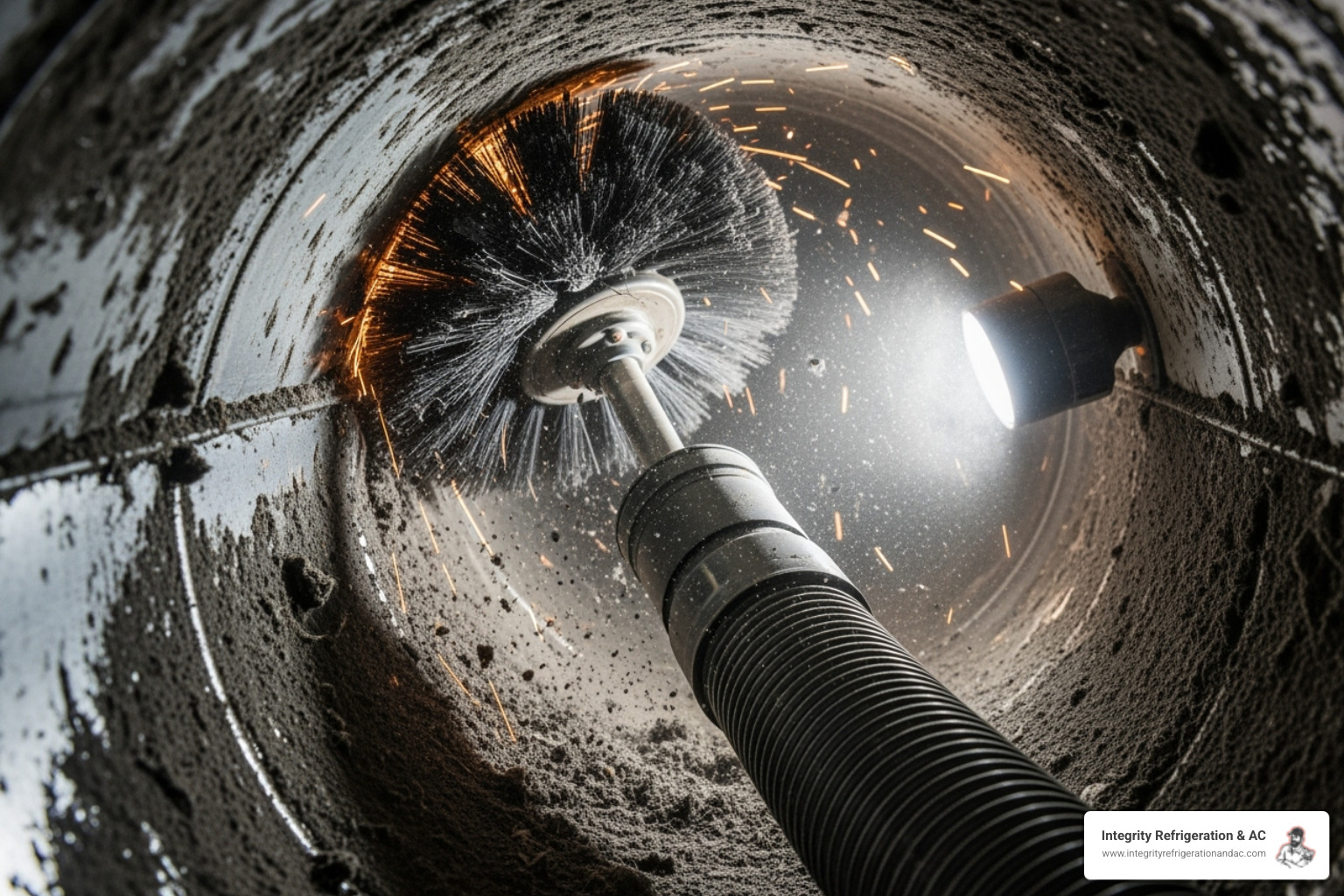
The process starts with a thorough system inspection. A technician will assess your system's condition, identify problem areas, and explain the cleaning strategy. Before starting, they will protect your home by covering furniture and sealing off sensitive areas to contain dust.
The industry gold standard is the source removal method. First, a powerful vacuum creates negative air pressure in your HVAC system, ensuring that all loosened debris is suctioned out of the home rather than released into the air. Then, technicians use agitation tools—like rotary brushes, air whips, and compressed air nozzles—to break loose stubborn buildup from duct surfaces. The tools used are matched to the duct type, from gentle brushes for fiberglass to more aggressive tools for metal ducts.
A key part of the process is cleaning all components of the HVAC system, including supply and return ducts, the air handler, coils, drain pan, registers, and blower motor. Cleaning only the ducts is ineffective, as dirty components will quickly re-contaminate the system. For more details on professional standards, NADCA offers an Overview of the Cleaning Process.
While the DIY spirit is admirable, HVAC duct cleaning requires specialized equipment and expertise. Professional services use truck-mounted vacuums that create powerful suction, something a home vacuum cannot replicate. A DIY attempt often just pushes dirt deeper into the system or spreads it throughout your home.
Professionals use the source removal method to ensure contaminants are fully extracted. DIY cleaning typically only reaches a few visible areas and risks damaging fragile ductwork or sensitive HVAC components like evaporator coils. Improper cleaning can even make your air quality worse by spreading mold spores or allergens. The potential cost of repairs and the ineffectiveness of the cleaning make professional service the safer, more cost-effective option in the long run. Our article on The Role of Ductwork in Effective Commercial HVAC Installation highlights the complexity of these systems.
A complete HVAC duct cleaning service addresses the entire system. This is non-negotiable for an effective cleaning. Key components include:
This comprehensive approach aligns with the ACR, The NADCA Standard for Assessment, Cleaning & Restoration of HVAC Systems, which sets the industry benchmark for quality work.
Finding a trustworthy HVAC duct cleaning professional requires diligence, as the industry has its share of scammers. Knowing what to look for can help you avoid common pitfalls.
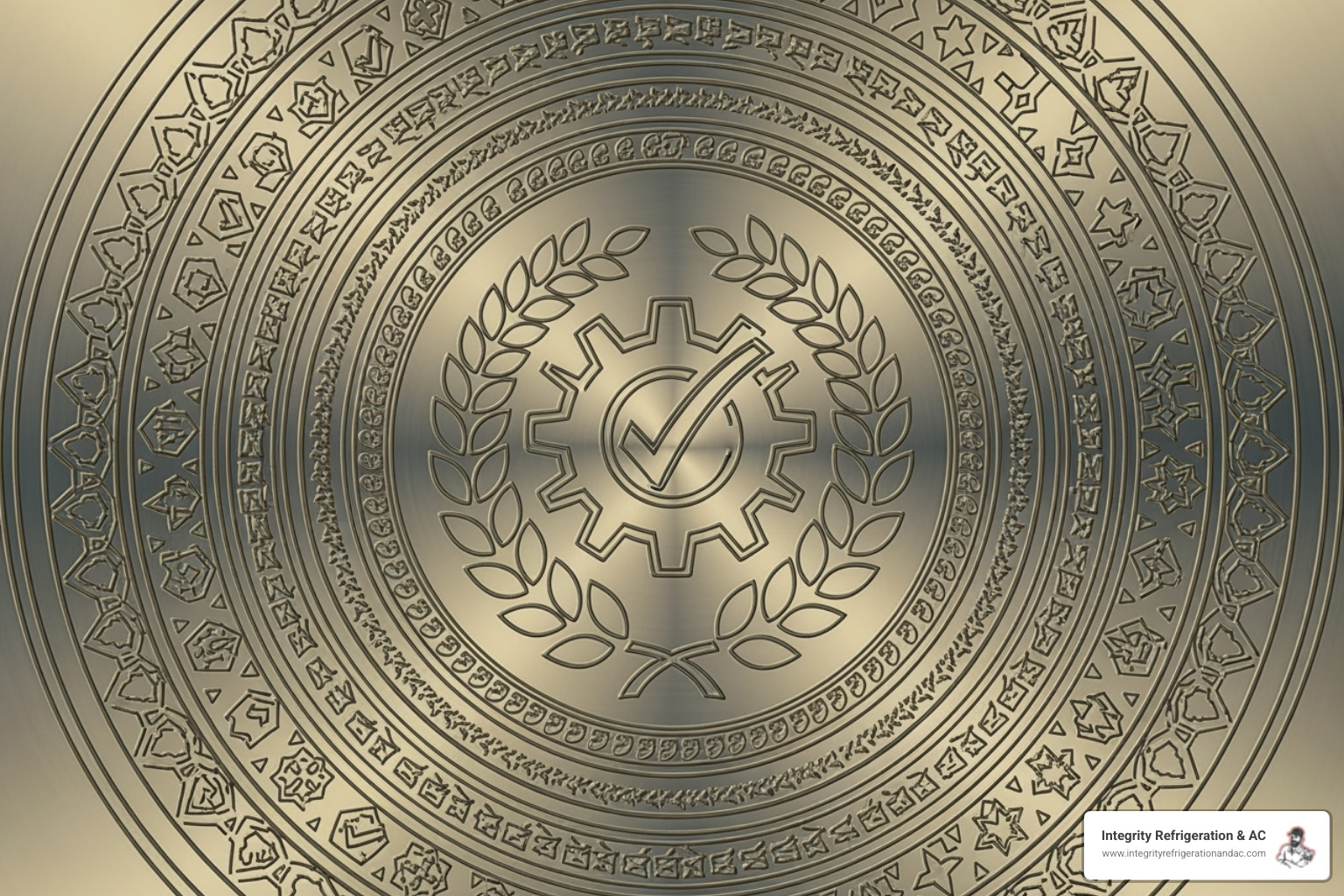
Start by researching companies thoroughly. Read online reviews from multiple sources and look for detailed service descriptions on their websites. Always check references from recent customers and get a written estimate that details the scope of work and total cost before agreeing to any service. Finally, ask for proof of insurance, including liability and workers' compensation, to protect yourself from accidents.
Be aware of these common red flags:
If you feel pressured or suspect a scam, contact your State Consumer Protection Offices for guidance.
When hiring for HVAC duct cleaning, NADCA certification is your best assurance of quality. The National Air Duct Cleaners Association (NADCA) sets the industry's gold standard.
NADCA members must adhere to a strict Code of Ethics and have at least one certified Air System Cleaning Specialist (ASCS) on staff. Passing the ASCS exam requires deep knowledge of HVAC systems, cleaning methods, and safety protocols. These professionals must also complete continuing education to stay current with industry best practices.
Hiring a NADCA-certified company means you're getting a trained professional who understands the science behind indoor air quality. You can Find a NADCA professional duct cleaner near you. through their online directory.
Arm yourself with the right questions to vet potential contractors:
Here are straightforward answers to the most common questions about HVAC duct cleaning.
There is no fixed schedule. The EPA recommends cleaning on an "as-needed" basis when a specific problem arises. However, many homeowners opt for professional cleaning every 3-5 years as a general maintenance guideline.
You may need more frequent cleaning if you have:
Let your home's specific conditions, not a calendar, guide your decision.
Reputable HVAC duct cleaning companies primarily rely on mechanical cleaning methods like powerful vacuums, brushes, and air whips. Chemicals are not typically part of a standard cleaning.
In cases of visible mold or bacterial growth, a technician might recommend an antimicrobial biocide or sanitizer after the mechanical cleaning is done. If chemicals are suggested, they must be EPA registered for use in HVAC systems. A professional will be transparent about the products they use and why they are necessary. Always ask for the product's safety data sheet. For more information, the EPA provides guidelines on Regulating Antimicrobial Pesticides.
Be wary of "$99 whole house" ads, which are almost always bait-and-switch scams. The cost of a legitimate, thorough HVAC duct cleaning typically ranges from $450 to $1,000.
Several factors influence the final price:
Always get a detailed, written quote before any work begins to understand the full cost and what services are included. Quality cleaning is an investment in your home's air quality and system efficiency.

Navigating HVAC duct cleaning is easier when you can separate fact from fiction. The key takeaway is that while not every home needs it routinely, professional cleaning is a valuable service for the right reasons. When you see signs like visible mold, pest issues, or excessive post-renovation dust, a thorough cleaning can significantly improve your indoor air quality and HVAC efficiency.
Making an informed decision means recognizing the signs in your own home and choosing a qualified professional to do the job correctly. Here in Winter Haven and throughout Polk County—from Davenport to Lakeland to Auburndale—we at Integrity Refrigeration & AC are committed to providing honest service.
We believe everyone deserves a comfortable, healthy home, which is why we offer flexible financing options to make quality service affordable. If you've noticed excessive dust, musty odors, or worsening allergy symptoms, we're here to help you breathe easier.
Ready to take the next step toward cleaner air? Learn more about our comprehensive Duct Cleaning Services in Winter Haven, FL and find out how we can help create the healthy home environment your family deserves.


